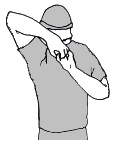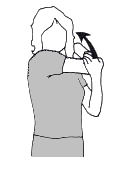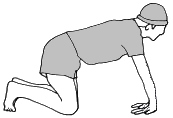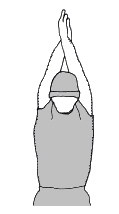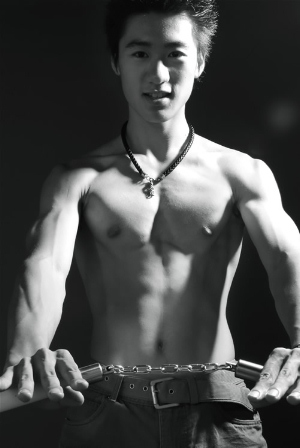 Nunchaku training stimulates some muscles that are not used to work so hard in
Nunchaku training stimulates some muscles that are not used to work so hard in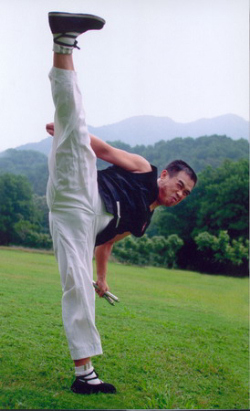
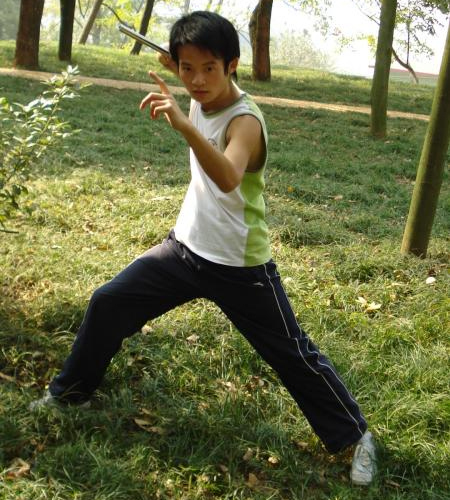 How to avoid muscle soreness?
It can be fought at three distinct moments: before, during and after the effort.
Before the effort, weíll limit the creation of blood and lactic acid in the aponeurosis thanks to a good warm-up. Indeed, when the muscle isnít used, it isnít correctly irrigated by the bloodstream. Considering that, if one starts an effort suddenly, muscular fibers are more likely to have difficulty to cope, and so they will produce lactic acid or maybe even break and bring blood into aponeurosis. The warm-up "warns" the muscle that it will have to produce an effort and as a consequence blood will bring more nutrition. Warm-up is short and efficient; therefore it would be a shame to skip it. You just need to jog around, moving the arms correctly during 2 minute, breathe correctly and with getting out of breath. Most muscles of the body will be then ready for the effort.
During the effort, weíll help the muscle to work correctly by giving it everything it needs. If your training is long, plan energetic bars so that you wonít run out of glucose. Whatever the length of the training is, it is also important to drink often: Muscles use water to work and evacuate heat.
After the effort, when it is the most important, we will help the muscle to release the lactic acid and blood from the aponeurosis. Once the muscular fibers are damaged, the muscle loses its elasticity liquid retention is favored. Stretching is very efficient to help the muscles regain their elasticity and thereby eliminate a major part of liquids.
It is therefore advised to have some stretching workout at the end of training; it takes only 10 minutes and can be very efficient, if done correctly. You will find hereunder some exercises to stretch the main muscles used while practicing Nunchaku. Some movements can be uncomfortable and/or painful but that is absolutely normal, donít panic and do them just as described.
How to avoid muscle soreness?
It can be fought at three distinct moments: before, during and after the effort.
Before the effort, weíll limit the creation of blood and lactic acid in the aponeurosis thanks to a good warm-up. Indeed, when the muscle isnít used, it isnít correctly irrigated by the bloodstream. Considering that, if one starts an effort suddenly, muscular fibers are more likely to have difficulty to cope, and so they will produce lactic acid or maybe even break and bring blood into aponeurosis. The warm-up "warns" the muscle that it will have to produce an effort and as a consequence blood will bring more nutrition. Warm-up is short and efficient; therefore it would be a shame to skip it. You just need to jog around, moving the arms correctly during 2 minute, breathe correctly and with getting out of breath. Most muscles of the body will be then ready for the effort.
During the effort, weíll help the muscle to work correctly by giving it everything it needs. If your training is long, plan energetic bars so that you wonít run out of glucose. Whatever the length of the training is, it is also important to drink often: Muscles use water to work and evacuate heat.
After the effort, when it is the most important, we will help the muscle to release the lactic acid and blood from the aponeurosis. Once the muscular fibers are damaged, the muscle loses its elasticity liquid retention is favored. Stretching is very efficient to help the muscles regain their elasticity and thereby eliminate a major part of liquids.
It is therefore advised to have some stretching workout at the end of training; it takes only 10 minutes and can be very efficient, if done correctly. You will find hereunder some exercises to stretch the main muscles used while practicing Nunchaku. Some movements can be uncomfortable and/or painful but that is absolutely normal, donít panic and do them just as described.
